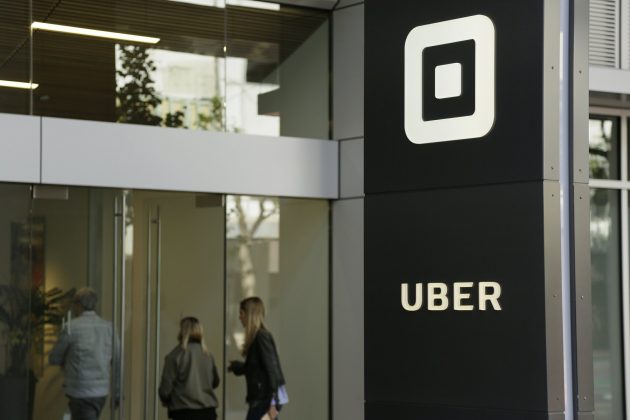NEW YORK—Uber lost $2.9 billion in the first quarter as its overseas investments were hammered by COVID-19.
While the CCP (Chinese Communist Party) virus, commonly known as novel coronavirus pandemic hit the company hard, it is looking to grow its food delivery business and strengthen cost-cutting measures to ease the pain.
The ride-hailing giant said May 7 it is offloading Jump, its bike and scooter business, to Lime, a company in which it is investing $85 million. Jump had been losing about $60 million a quarter.
“While our Rides business has been hit hard by the ongoing pandemic, we have taken quick action to preserve the strength of our balance sheet, focus additional resources on Uber Eats, and prepare us for any recovery scenario,” said CEO Dara Khosrowshahi in a statement. “Along with the surge in food delivery, we are encouraged by the early signs we are seeing in markets that are beginning to open back up.”
On Wednesday, San Francisco-based Uber said it was cutting 3,700 full-time workers, or about 14 percent of its workforce, as people avoiding contagion either stay indoors or try to limit contact with others. Its main U.S. rival Lyft announced last month it would lay off 982 people, or 17 percent of its workforce because of plummeting demand. Careem, Uber’s subsidiary in the Middle East, cut its workforce by 31 percent.
Uber brought in $3.54 billion in revenue in the first quarter, up 14 percent from the same time last year.
Revenue in its Eats meal delivery business grew 53 percent as customers shuttered at home opted to order in. The company exited markets where its food delivery business was unprofitable, including the Czech Republic, Egypt, and Honduras. But it added key accounts including Chipotle, Dunkin’, and Shake Shack, and it enabled delivery from grocery and convenience stores.
“At a time when our rides business is down significantly due to shelter-in-place, our Eats business is surging,” Khosrowshahi said on a conference call with investors. “The big opportunity we thought Eats was just got bigger.”
Gross bookings grew 8 percent to $15.8 billion, with 54 percent growth in the food delivery business and a 3 percent decline in rides, on a constant currency basis.
Uber’s bottom line was hurt in the first quarter when the value of its investments in Chinese ride-hailing giant Didi, Singapore-based Grab, and others plummeted by $2.1 billion as demand collapsed in those regions.
The challenges are continuing in the second quarter. In April, rides were down 80 percent globally compared to last year, Khosrowshahi said. But rides have been increasing for the past three weeks and bookings in large cities across Georgia and Texas, two states that started re-opening, are up 43 percent and 50 percent respectively from their lowest points, he said.
Demand for the Eats business grew 89 percent in April, excluding India, and “we’ve seen an enormous acceleration in demand since mid-March,” Khosrowshahi said.
Grocery delivery could be a part of Uber’s future in the United States.
“There’s going to be more room for more than one player,” Khosrowshahi said. “We’re in many of these cities already. So we just have the infrastructure to be able to get started in these cities … in a very low cost way.”
Uber updated its driver app to make it easier for ride providers to pick up delivery work, and nearly 40 percent of drivers in the United States and Canada cross-dispatched to work for the Eats platform in April, the company said.
But getting into grocery delivery would take time, and the boost in restaurant delivery is not enough to stem Uber’s losses, said Eric Schiffer, CEO of the Patriarch Organization.
“This is a brutal body blow to Uber’s path to profitability, and potentially even its existential future, because few rational people are willing to put themselves into harm’s way to ride in a vehicle, and many drivers have their own concerns,” Schiffer said. “Uber customers would rather chew glass than sit in the backseat of one of those cars.”
Uber’s investment in Lime came as part of a $170 million funding round, which also included Alphabet, Bain Capital Ventures, GV, and other investors. Customers will still have access to electric Jump bikes and scooters in the Uber app, but Lime will run the operation.
To help keep drivers and riders protected during the pandemic, Uber says it will require drivers and riders to wear a mask beginning sometime in the coming weeks. Lyft made a similar announcement Thursday.
By Cathy Bussewitz
NTD staff contributed to this report

